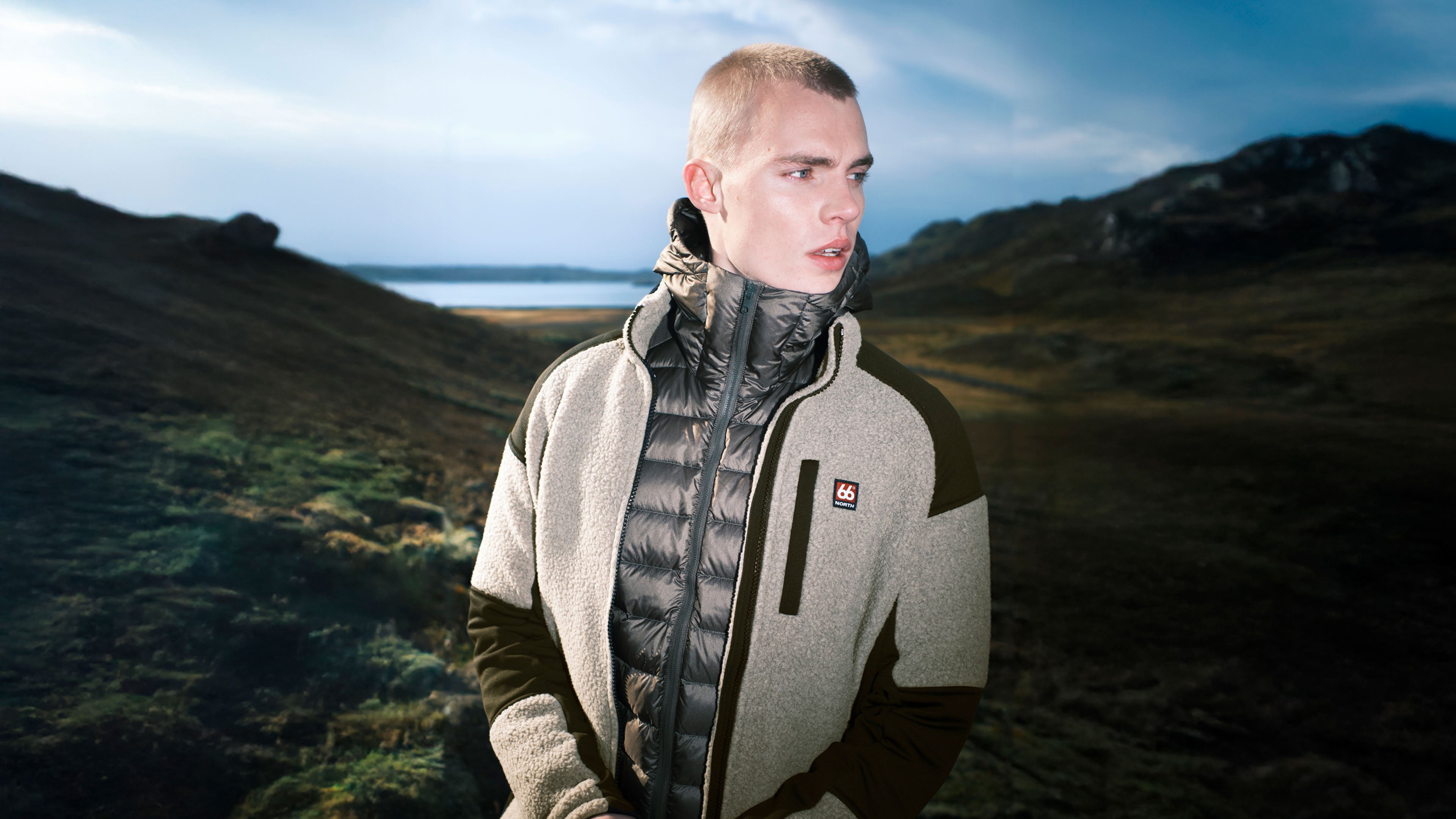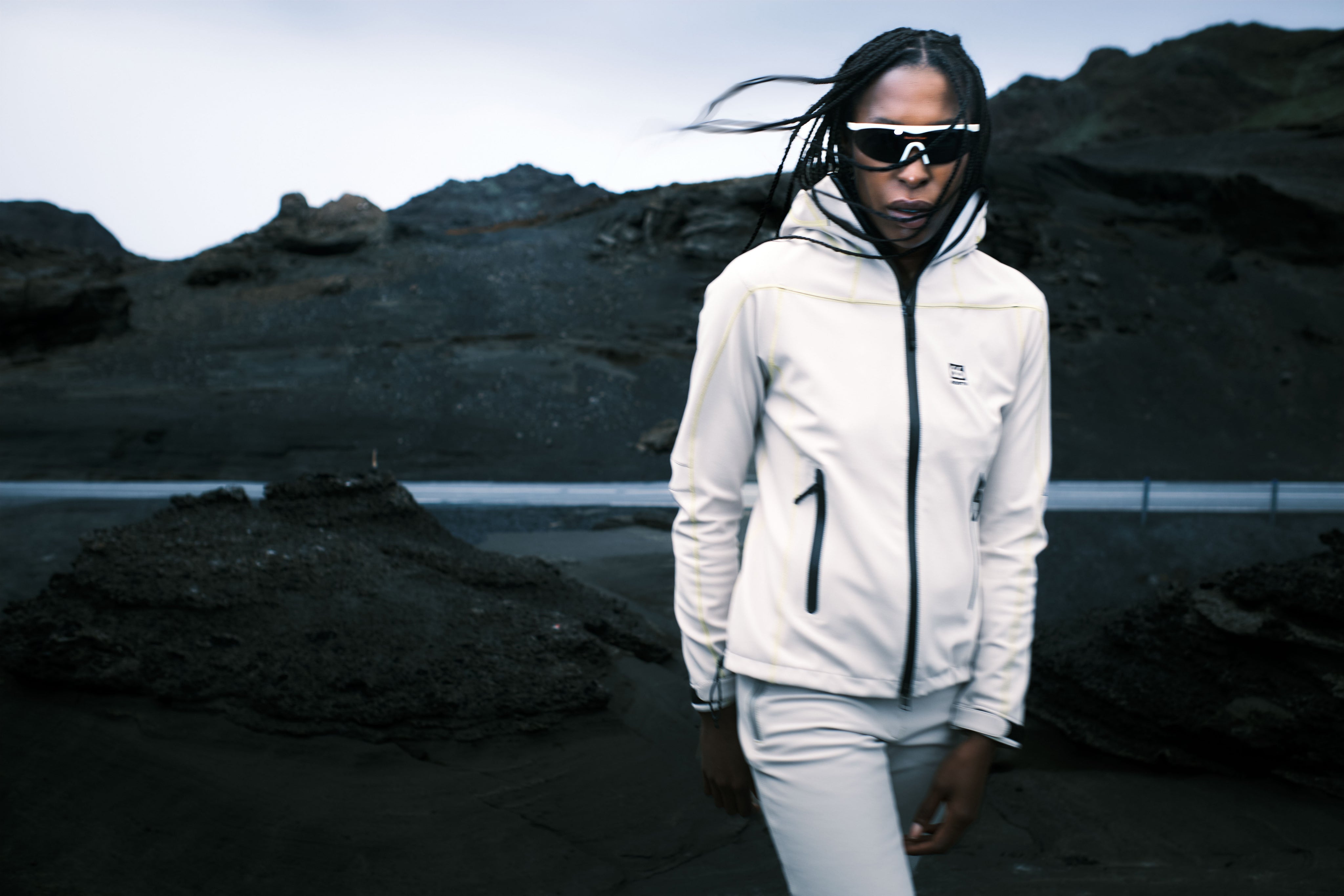Glaciers make Iceland an extraordinary place. Let's do what we can to keep it that way.
Glaciers dominate the landscape in many parts of Iceland. They are the view from our home and a destination during the weekend. They shaped our mountains and created our rivers which carve up the landscape and make our country so extraordinary.
Icelandic glaciers are one of the reasons we exist as a company and we want to protect them. All our glaciers have slowly but surely been disappearing through the years. For the past four years we have donated part of our sales to funds that all have one thing in common: protect our nature.
25% of all online sales on November 28th 2025 will fund the protection of glaciers in Iceland.
On Friday, November 28th, we’ll celebrate glaciers for the seventh year in a row. On this day, 25% of all online sales will go directly to the Icelandic Glaciological Society.
The Icelandic Glaciological Society was founded in 1950 to support research about our glaciers. There, both scientists and laymen get the opportunity to work together towards the same goal – documenting the disappearance of our glaciers.
Whether you shop with us or donate to the Icelandic Glaciological Society directly, you will be helping preserve the Icelandic glaciers for future generations.
Tips for your next purchase
- Before adding a new garment to your wardrobe, consider how often you’ll wear it, how long it might last, and if it could be useful to someone else later.
- Explore second-hand clothing at local flea markets.
- Give older pieces a new life through repair.
Glacier Friday
Since 2019, we have not participated in Black Friday. Instead, 25% of our online sales go to funding organizations that all have one thing in common: protecting our nature.
Like the past six years, we want to dedicate this day to the glaciers, a tangible reminder of how our environment is passed down to future generations. It’s a day to pause and think before buying something new. Over the past four years, we’ve supported the Iceland Glacier Research Society, funding measurements of several glaciers to give a clearer picture of their state.
Since the initiative began, 66°North has donated a total of 7.5 million ISK (≈ £45,150) to support glacier research - funding projects that often go under-resourced. These grants have supported mass-balance measurements of lesser-known glaciers and enable public access to decades of photo-data (some dating back to the 1930s). The grant has also helped fund public educational events, presenting the latest knowledge on glaciers and climate change in an accessible way.
Collaboration between 66°North and JÖRFÍ
2021-2022
The Iceland Glaciological Society (Jöklarannsóknafélagið, or JÖRFÍ) conducted expeditions with the purpose of resurrecting mass balance measurements on Tindfjallajökull glacier and Eyjafjallajökull glacier. In short, two measurements were taken - in May, to measure the accumulation of snow during winter by drilling through the winter layer of snow, and in the fall months to measure the rate of ablation in the summer. This provided an assessment of the glaciers' condition. The aim of the project was to increase understanding of the mass balance of smaller glaciers in Iceland and to promote awareness of glacial changes during global warming. The team also took the opportunity to film footage when the mass balance measurements were taken in the spring and fall. Findings from the project were presented at the Glaciological Society's fall meeting and a short video was put together with footage from the trips.
2022-2023
Historical photographs of glaciers in Iceland have recently been collected and this includes the scanning of photographs owned by the Glaciological Society. The photographs provide insight into the changes that Iceland's glaciers have undergone over the past decades, dating all the way back to 1900. Part of the collaboration consisted of visiting specific locations and retaking the photographs. A comparison of the images shows in a simple and effective way how glaciers have retreated, and this plays an important part in documenting changes to Icelandic glaciers. Select pairs of photographs will be published on the web browser for Icelandic glaciers (islenskirjoklar.is) and on social media for the Glaciological Society and 66°North.






Eyjafjallajökull | 2000 - 2023


Tindfjallajökull | 2000 - 2023
Q&A with The Iceland Glaciological Society
How have the previous donations from 66°North’s Glacier Friday been used to support the operations of JÖRFÍ?
The grant has been invaluable to JÖRFÍ. It has allowed us to carry out projects that usually receive little or no research funding, yet are fundamental to measuring and understanding the future of Icelandic glaciers. The grant has, among other things, enabled us to collect data from smaller glaciers that would otherwise not be measured, and to make the association’s photo archive accessible to the public. These photos come from the earliest research expeditions to Icelandic glaciers and also show the state of glacier termini when measurements began around 1930. The archive sheds light on the equipment used by early glaciologists and the primitive conditions they faced when traveling on the glaciers.
The grant has also been very helpful for educational and informational meetings for the public, presenting the latest knowledge on glaciers and climate change in an accessible way.
What glacier measurements have been carried out with the help of the 66°North grant, and what significance do these recordings have?
The measurements form part of an important database showing how smaller glaciers respond more rapidly to warming than larger ones. They give the scientific community better insight into the development of small glaciers and help in understanding what changes lie ahead. Examples of glaciers whose mass balance has been measured in this collaboration include Eyjafjallajökull, Tindfjallajökull, Torfajökull, Hofsjökull East, and Þrándarjökull. These data go into the Icelandic database and are also accessible on the glacier web map (islenskirjoklar.is), which the association maintains in cooperation with several institutions.
By scanning and documenting the association’s photo archive (which contains thousands of photographs), new opportunities have emerged to recreate old glacier images which, when compared with new ones, highlight the significant retreat that has taken place on Iceland’s glaciers. Such image series are particularly well suited for showing the public how dramatically Iceland’s landscape has changed over the past 100 years.
In the bigger picture - what needs to happen to preserve the glaciers for the future?
Global warming must be significantly slowed, which can only happen through substantial reductions in greenhouse gas emissions worldwide. Despite this, it is very likely that many smaller glaciers cannot be saved, as warming has already progressed so far that reversing current trends will be very difficult.
What will the landscape of the glaciers look like in the next 99 years if the current trends continue?
Icelandic glaciers face continued retreat due to climate change. Forecast models show that future developments depend heavily on how quickly greenhouse gas emissions can be reduced in the coming decades. Model calculations for Vatnajökull show that by 2100 its volume will decrease by about 20%, regardless of climate scenarios. After that, the outcome depends greatly on emission levels. If warming is limited to 2°C by the end of the century, in line with the Paris Agreement, Vatnajökull could reach a new equilibrium in a warmer climate with about 30–60% of its current volume. Older model calculations for Hofsjökull and Langjökull suggest that a 2°C warming could cause them to disappear entirely within 200–300 years. As previously noted, the smaller glaciers will vanish first. Less emphasis has been placed on assessing their future in Iceland, often because data for them is less complete than for the larger glaciers.
Which glaciers are currently at greatest risk of disappearing, and which have already disappeared?
It is expected that several well-known glaciers will disappear in the coming decades, including Hofsjökull East, Þrándarjökull, Torfajökull, and Kaldaklofsjökull. Since the year 2000, dozens of small glaciers have disappeared, many of them in the mountains of Tröllaskagi and Flateyjarskagi, as well as other lesser-known glaciers in the mountainous areas of the Eastfjords.
The retreat of the glaciers
Glaciers in Iceland began retreating rapidly after 1995, and their shrinking marks one of the largest effects and clearest manifestations of global warming. A number of small glaciers have vanished during this period and it has now become clear that many glaciers will vanish in the coming decades. Since the turn of the century, Icelandic glaciers have shrunk by approx. 850 km2, which is the equivalent of about one Langjökull glacier, whereas since 1900 we have lost what equates to about three Langjökull glaciers.
Glacial lagoons have formed in front of numerous glaciers and the lagoons grow larger as the glaciers retreat. Volunteers for the Glaciological Society carry out measurements on various glacier termini across the country. Many of Iceland's larger outlet glaciers have retreated by hundreds of meters in the last two years. As an example of this, Dyngjujökull glacier has retreated by 500 m, Síðujökull glacier by 300 m, Breiðamerkurjökull glacier and Hagafellsjökull glacier by 250 m, and Þjórsárjökull glacier by 100 m.
Svínafellsjökull: 1940 - 2019


Sultartungnajökull: 1991 - 2023















